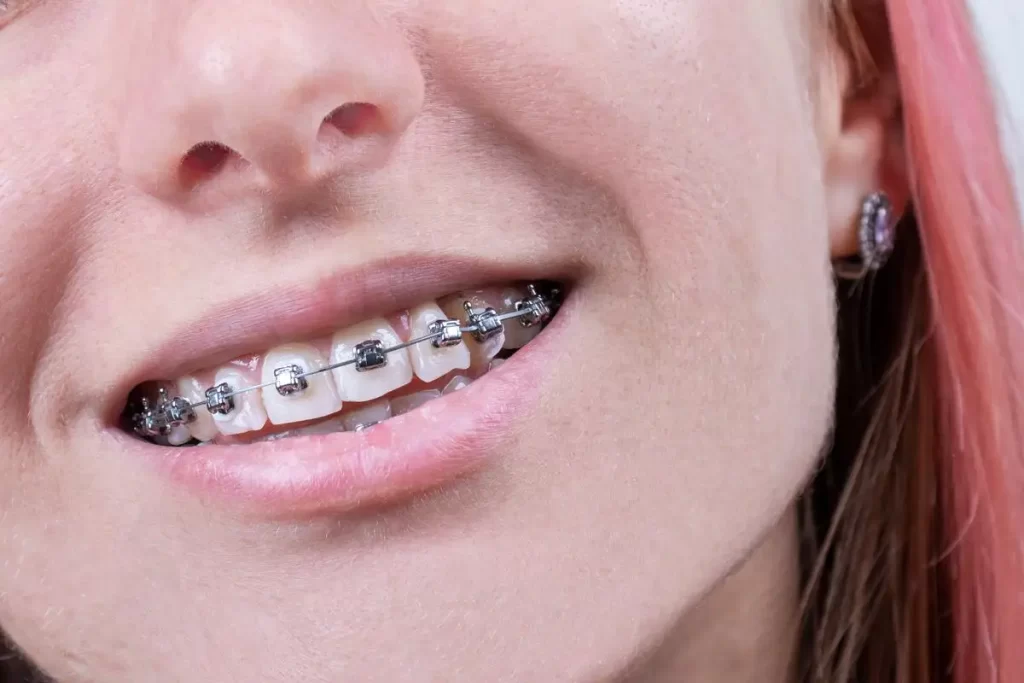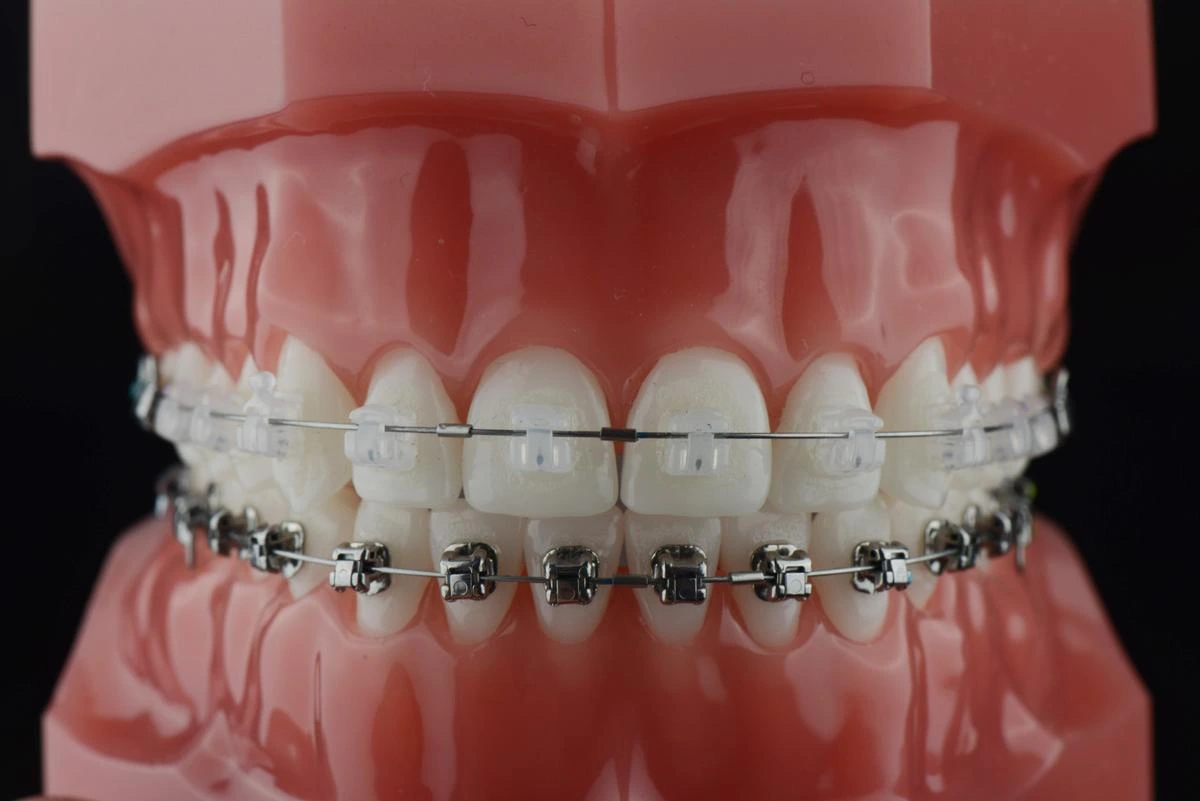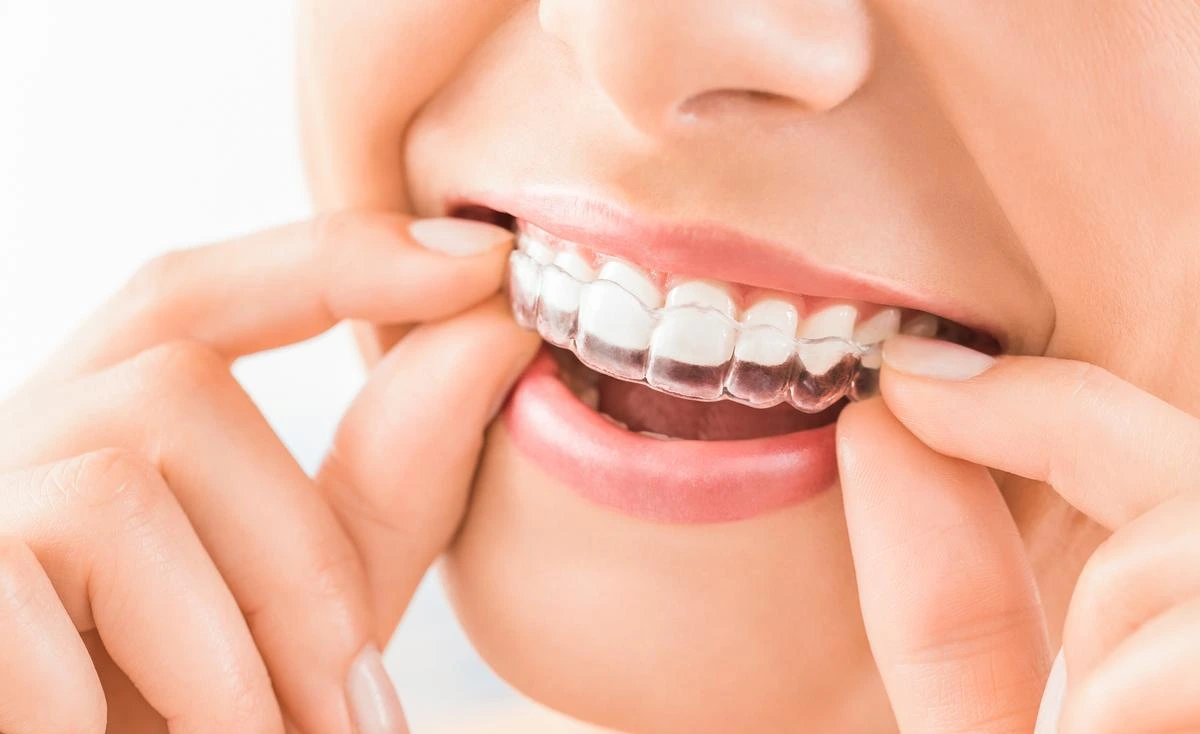Whether you have traditional braces or self-ligating braces, wearing braces means that it may result in changes to your teeth and jaw alignment. They can assist in straightening crooked teeth, adjusting the space between teeth, or fixing a problematic bite if a dental practitioner recommends them.
When you get braces, little metal attachments called brackets are attached to your teeth. An archwire is a very fine metal wire that runs from one bracket to the next and is known by its technical name, archwire. Your teeth will be moved into the proper position while the archwire is gradually adjusted to provide force.
For orthodontic treatment to be successful, the archwire must be kept firmly within the brackets. Using elastic bands or metal ties makes traditional braces capable of doing this. Self-ligating braces, on the other hand, utilize a mechanism integrated into the bracket to hold the archwire in place.
Keep reading if you want to learn more about self-ligating braces, including their possible benefits and drawbacks, as well as other information.

What Are Self-Ligating Braces?
Sometimes called self-locking or simply “self-ligation” braces, self-ligating braces are a type of orthodontic treatment that utilizes a specialized mechanism to hold the archwire in place within the brackets.
Unlike traditional braces, which typically use elastic bands or metal ties to accomplish this task, self-ligating braces use a built-in clip or door that holds the archwire.
How Long Do Self-Ligating Braces Take To Complete The Treatment?
This is a question that many people have regarding self-ligating braces. However, the answer will vary depending on several factors, such as the severity of your dental misalignment or bite problems and how well you follow your orthodontist’s treatment recommendations.
Generally, self-ligating braces can take anywhere from 18 to 24 months to be fully effective and create the desired changes in your teeth and jaw.
How Do Self-Ligating Braces Work?
The archwire is held in place by self-ligating bracing thanks to a mechanism incorporated directly into the bracket. On the other hand, traditional braces fasten the archwire using either elastic ties or metal wires.
People who wear self-ligate braces may have shorter sessions with their orthodontist, easier cleaning of their teeth, and less discomfort.
Talk to your orthodontist about getting self-ligating braces if you want them. They are able to determine whether or not you would benefit from wearing self-ligating braces and can aid you in making that determination.
What Are Its Benefits?
The use of braces that can self-ligate is associated with several possible advantages.
1. Visits to the orthodontist will take less time.
When an adjustment is performed on a patient wearing conventional braces, each ligature must be replaced individually. Opening and closing self-ligating brackets during an adjustment take significantly less time than traditional brackets.
2. It is simpler to clean.
Food particles might become lodged in and around your brackets if you have ligatures. Self-ligating braces do not have ligatures. Hence, they may be easier to clean than traditional braces.
3. Lesser pain.
It’s possible that traditional braces will cause you more discomfort than self-ligating ones. The absence of elastic ligatures may be the reason for this potential benefit.
4. Less need for adjustments.
You don’t have to see your orthodontist as often if you are wearing self-ligating braces because they can last longer before needing adjustments or replacements.
Who Should Get Self-Ligating Braces?
Whether or not you decide to acquire self-ligating braces depends on various variables, including your particular condition, your treatment plan, and your financial situation.
You and your orthodontist can assess whether self-ligating braces are suitable for you as an individual patient.
Self-Ligating Braces vs. Traditional Braces
Many people mistake self-ligating braces and traditional braces for being the same. But there are actually notable distinctions between these two.
Self-Ligating Braces
Self-ligating braces are equipped with a mechanism that is pre-installed for the purpose of fastening the archwire to the brackets. Self-ligating brackets are another name for these kinds of brackets.
The method used in self-ligating braces means that it is distinct from typical braces, characterized by the attachment of teeny-tiny elastic bands or metal ties to the brackets to maintain the archwire’s position. Ligatures are the correct term for them.
When talking about self-ligating braces, it is essential to be aware that there are two distinct forms of self-ligating brackets, referred to respectively as active and passive. Both varieties have a mechanism that functions like a door or gate to cover the bracket when it is not in use.
Sliding spring clips are utilized in the mechanism of active brackets. They exert a dynamic force by pressing on the archwire that supports the arch.
Passive brackets utilize a straightforward sliding mechanism. They do not exert any pressure on the archwire, unlike active brackets.
Traditional Braces
Traditional braces can realign an improper bite and address issues with the jaw. In addition, braces resolve any issues you may have had with eating, speaking clearly, or correctly maintaining the cleanliness of your teeth.
Traditional orthodontic appliances have become more streamlined, compact, and pleasant as a result of advances in dental technology.
Traditional braces are made up of metal brackets of a standard size that are bonded to your teeth using an adhesive and then attached to one another using wire. They need to be tightened periodically once every four to six weeks in order for the constant pressure to progressively align your jaw and straighten your teeth.
There are a number of different treatment methods available, while the most common type of orthodontic appliance is still the metal brackets attached to teeth. You may learn more about conventional braces and how you can tailor them to meet your lifestyle by reading the information that is provided below.
The Verdict
Self-ligating braces and traditional braces are two types of orthodontic treatment that are used to correct alignment issues in the teeth. Both options use brackets and wires to reposition the teeth, but self-ligating braces utilize a specialized clip that holds the wire in place without requiring additional ties or elastics.
While both treatment options achieve a beautiful, straight smile, self-ligating braces may be a better choice for some patients due to their faster treatment time and reduced need for maintenance.
Whether you are considering self-ligating braces or traditional braces, be sure to consult with your orthodontist to determine which option is best suited to your unique needs and goals.
Consult Us Today!
At Grand Oaks Orthodontics, we can help you find self-ligating braces that fit your needs. With our technology, we can assist you in trying out options to see what works best with your preferences.
Make an appointment with Dr. Sood as soon as possible if you want to discuss the possibility of having self-ligating braces. We can help you determine if self-ligating braces are the right choice and answer any questions about how self-ligating braces work and their benefits.
Call us to learn more about self-ligating braces and our other orthodontic services. We look forward to hearing from you!



